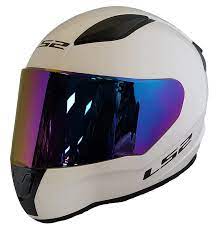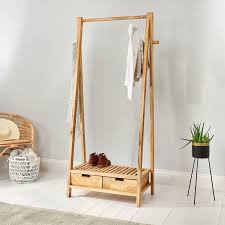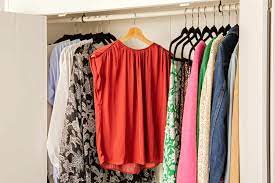Enhancing Style and Safety: The Tinted Visor Motorcycle Helmet

Tinted Visor Motorcycle Helmet: Enhancing Style and Safety
When it comes to riding a motorcycle, safety should always be the top priority. One essential piece of protective gear that every rider should invest in is a reliable helmet. While helmets are primarily designed to protect the head from potential injuries, they also serve another important purpose – enhancing visibility on the road. One popular option that combines style and functionality is the tinted visor motorcycle helmet.
A tinted visor refers to the shield or face shield of a motorcycle helmet that has a darkened or smoked finish. Unlike clear visors, which allow maximum light transmission, tinted visors are designed to reduce glare and provide protection against harsh sunlight. They come in various shades, ranging from lightly tinted to heavily smoked, allowing riders to choose their preferred level of darkness.
One of the key benefits of using a tinted visor is its ability to enhance visibility during bright and sunny conditions. When riding in intense sunlight, it can be challenging for riders to keep their eyes focused on the road due to excessive glare. A tinted visor helps reduce this glare, allowing riders to maintain clear vision and ride with confidence.
Moreover, a tinted visor also offers protection against harmful ultraviolet (UV) rays emitted by the sun. Prolonged exposure to UV rays can have damaging effects on the eyes and skin. With a tinted visor, riders can shield their eyes from these harmful rays while enjoying their ride.
Another advantage of using a tinted visor is its ability to provide privacy and shield against distractions. Riders often encounter situations where bright lights from surrounding vehicles or streetlights can cause discomfort or distraction. A tinted visor helps mitigate these issues by reducing the intensity of these external lights, allowing riders to stay focused on the road ahead.
It’s important to note that while tinted visors offer numerous benefits, they may not be suitable for all riding conditions. In low-light or nighttime situations, a heavily tinted visor can significantly reduce visibility and compromise safety. Therefore, it’s crucial for riders to have a clear visor as an alternative and switch to it when riding in darker conditions.
When choosing a tinted visor motorcycle helmet, it’s essential to ensure that the helmet meets safety standards and regulations set by relevant authorities. Look for helmets that are approved by recognized safety organizations, such as the Department for Transport (DfT) in the UK or the Department of Transportation (DOT) in the US. Additionally, ensure that the helmet fits properly and provides adequate protection for your head.
In conclusion, a tinted visor motorcycle helmet combines style and functionality while enhancing both visibility and safety on the road. With its ability to reduce glare, protect against harmful UV rays, and provide privacy from distractions, it’s no wonder why many riders opt for this type of helmet. However, it’s important to use caution and switch to a clear visor when riding in low-light or nighttime conditions. Remember, investing in a quality helmet with a tinted visor is an investment in both style and safety for every motorcycle enthusiast.
Frequently Asked Questions: Tinted Visor Motorcycle Helmets in the UK
- Are tinted visor motorcycle helmets legal in the UK?
- Can I wear a tinted visor at night or in low-light conditions?
- How much light does a tinted visor block?
- Can I replace the visor on my existing helmet with a tinted one?
- Are there different shades of tint available for visors?
- Do tinted visors provide UV protection for the eyes?
- How do I clean and maintain a tinted visor on my motorcycle helmet?
Are tinted visor motorcycle helmets legal in the UK?
In the UK, the use of tinted visor motorcycle helmets is subject to specific regulations. According to the law, motorcycle helmets must meet certain standards and requirements to ensure safety on the road.
The current UK law states that motorcycle helmet visors must have a minimum light transmittance (VLT) level of 50%. This means that at least 50% of light must pass through the visor. The purpose of this requirement is to ensure that riders have clear vision and adequate visibility while riding, especially in low-light or nighttime conditions.
Tinted visors are allowed as long as they meet the minimum VLT requirement. Some manufacturers produce tinted visors that comply with these regulations by offering a suitable level of darkness while still allowing sufficient light transmission.
It’s important for riders to check whether the tinted visor they intend to use meets the legal requirements before using it on public roads. Non-compliant or excessively dark tinted visors may result in penalties, fines, or even invalidation of insurance coverage in case of an accident.
To ensure compliance, it’s recommended to purchase helmets and tinted visors from reputable manufacturers who adhere to safety standards and provide products that are approved for use on UK roads. Additionally, riders should always carry a clear visor as an alternative for riding in darker conditions or when visibility is reduced.
It’s worth noting that regulations can change over time, so it’s essential for riders to stay updated with any updates or changes in helmet and visor requirements set by relevant authorities such as the Department for Transport (DfT) or other governing bodies responsible for road safety in the UK.
Can I wear a tinted visor at night or in low-light conditions?
No, it is not recommended to wear a tinted visor at night or in low-light conditions. Tinted visors are specifically designed to reduce glare and provide protection against bright sunlight during the day. Wearing a heavily tinted visor in darker conditions can significantly impair your visibility, making it difficult to see clearly and potentially increasing the risk of accidents.
In low-light or nighttime situations, it is crucial to have maximum visibility on the road. Therefore, it is advisable to switch to a clear visor when riding in these conditions. Clear visors allow optimal light transmission and ensure that you have a clear view of your surroundings.
Always prioritize safety when choosing the appropriate visor for different riding conditions. If you anticipate riding during both daytime and nighttime, consider investing in a helmet with interchangeable visors or carrying an additional clear visor as a backup option. This way, you can adapt your gear accordingly and ensure optimal visibility regardless of the lighting conditions.
How much light does a tinted visor block?
The amount of light that a tinted visor blocks can vary depending on the specific shade or darkness of the visor. Tinted visors come in different levels of darkness, ranging from lightly tinted to heavily smoked.
Light transmission is often measured as a percentage, indicating the amount of light that passes through the visor. Generally, a lightly tinted visor may allow around 50% to 70% of light transmission, providing some reduction in glare while maintaining good visibility. On the other hand, heavily smoked or dark tinted visors may allow around 10% to 20% of light transmission, significantly reducing glare but also reducing overall visibility.
It’s important to note that different countries and regions may have specific regulations regarding the permissible level of tint for motorcycle helmet visors. These regulations are in place to ensure that riders maintain adequate visibility and comply with safety standards.
When choosing a tinted visor, it’s crucial to consider your riding conditions and preferences. If you frequently ride in bright sunlight and want maximum glare reduction, a darker tint may be suitable for you. However, if you often ride in varying lighting conditions or during nighttime, it’s advisable to have a clear alternative visor available for optimal visibility.
Ultimately, it’s essential to strike a balance between reducing glare and maintaining sufficient visibility when selecting a tinted visor for your motorcycle helmet.
Can I replace the visor on my existing helmet with a tinted one?
Yes, in most cases, you can replace the visor on your existing motorcycle helmet with a tinted one. Many helmet manufacturers offer tinted visors as accessories that are compatible with their helmet models.
To replace the visor, follow these general steps:
- Check compatibility: Ensure that the tinted visor you intend to purchase is compatible with your specific helmet model. Helmet manufacturers usually provide information regarding compatible visors for their helmets.
- Remove the existing visor: Most motorcycle helmets have a mechanism that allows for easy removal and replacement of the visor. Refer to your helmet’s user manual or manufacturer’s instructions to learn how to remove the current visor properly.
- Install the new tinted visor: Align the new tinted visor with the designated slots on your helmet and carefully insert it until it securely clicks into place. Make sure it is properly aligned and seated for optimal functionality.
- Test functionality: Once the new tinted visor is installed, test its functionality by moving it up and down to ensure smooth operation and proper locking mechanisms.
It’s important to note that some helmets may require additional tools or specific techniques for replacing the visor. Always refer to your helmet’s user manual or manufacturer’s instructions for detailed guidance on replacing the visor.
Additionally, be aware of any legal requirements or restrictions regarding tinted visors in your jurisdiction. Some areas may have regulations specifying acceptable levels of darkness for motorcycle helmet visors, particularly when riding at night or in low-light conditions.
Remember, ensuring proper fitment and compatibility is crucial when replacing a motorcycle helmet’s visor. If you have any doubts or concerns, it’s advisable to consult with a professional or contact the manufacturer directly for guidance and assistance.
Are there different shades of tint available for visors?
Yes, there are different shades of tint available for visors. Tinted visors come in a range of darkness levels, allowing riders to choose the shade that suits their preferences and riding conditions. The shades can vary from lightly tinted to heavily smoked.
Lightly tinted visors provide a subtle shading effect, reducing glare and bright sunlight without significantly impacting visibility. They are often preferred for daytime riding in moderately sunny conditions or when riders want some protection against glare without sacrificing too much light transmission.
On the other hand, heavily smoked or dark tinted visors offer a higher level of shading. These visors are ideal for riding in extremely bright conditions or when riders prefer a more dramatic reduction in glare and sunlight. However, it’s important to note that heavily tinted visors may significantly reduce visibility in low-light or nighttime situations and should be used with caution.
It’s recommended to choose a shade of tint that strikes the right balance between reducing glare and maintaining adequate visibility based on your specific riding needs and the typical weather conditions you encounter.
Do tinted visors provide UV protection for the eyes?
Yes, tinted visors do provide some level of UV protection for the eyes. The darkened or smoked finish of a tinted visor helps to reduce the amount of ultraviolet (UV) rays that reach the eyes. Prolonged exposure to UV rays can be harmful and may lead to eye damage, including conditions such as cataracts and macular degeneration.
However, it’s important to note that the level of UV protection provided by a tinted visor can vary depending on factors such as the shade of the tint and the quality of the visor material. Lightly tinted visors may offer some UV protection, but heavily smoked or darkly tinted visors generally provide better shielding against UV rays.
To ensure adequate protection, it is advisable to choose a helmet with a tinted visor that is specifically designed and labeled as providing UV protection. Look for helmets that meet safety standards and regulations set by recognized authorities in your country or region. Additionally, wearing sunglasses with UV protection underneath a tinted visor can provide an extra layer of safeguarding for your eyes when riding in bright sunlight.
Remember, while a tinted visor can help reduce glare and protect against UV rays during daytime riding, it’s important to switch to a clear visor when riding in low-light or nighttime conditions to maintain optimal visibility and safety on the road.
How do I clean and maintain a tinted visor on my motorcycle helmet?
Cleaning and maintaining a tinted visor on your motorcycle helmet is essential to ensure clear vision and extend its lifespan. Here are some steps you can follow:
- Gather the necessary supplies: You will need a soft microfiber cloth, mild soap or helmet visor cleaner, lukewarm water, and a clean towel.
- Remove the visor from the helmet: Most motorcycle helmets have a quick-release mechanism or screws that allow you to detach the visor easily. Refer to your helmet’s manual for specific instructions.
- Rinse the visor: Gently rinse the visor with lukewarm water to remove any loose dirt or debris.
- Clean with mild soap: Apply a small amount of mild soap or helmet visor cleaner to your microfiber cloth. Avoid using harsh chemicals or abrasive materials that may scratch or damage the tinted surface.
- Wipe gently: Using the dampened cloth, wipe the entire surface of the visor in gentle, circular motions. Pay extra attention to any areas with stubborn dirt or bugs but be careful not to apply excessive pressure that could scratch the tinted coating.
- Rinse and dry: Rinse off any soap residue from the visor with clean water. Then, use a clean towel or allow it to air dry naturally. Avoid using heat sources like hairdryers as they may damage the tinted coating.
- Reattach the visor: Once completely dry, reattach the visor to your helmet following the manufacturer’s instructions.
Additional tips for maintaining a tinted visor:
– Avoid using rough materials like paper towels or abrasive sponges as they can scratch or damage the tinted surface.
– Store your helmet in a cool, dry place away from direct sunlight when not in use.
– If you notice any deep scratches on your tinted visor that affect visibility, it’s recommended to replace it for optimal safety.
Regularly cleaning and maintaining your tinted visor will not only keep it looking clear and vibrant but also ensure a safer riding experience by providing unobstructed vision on the road.


